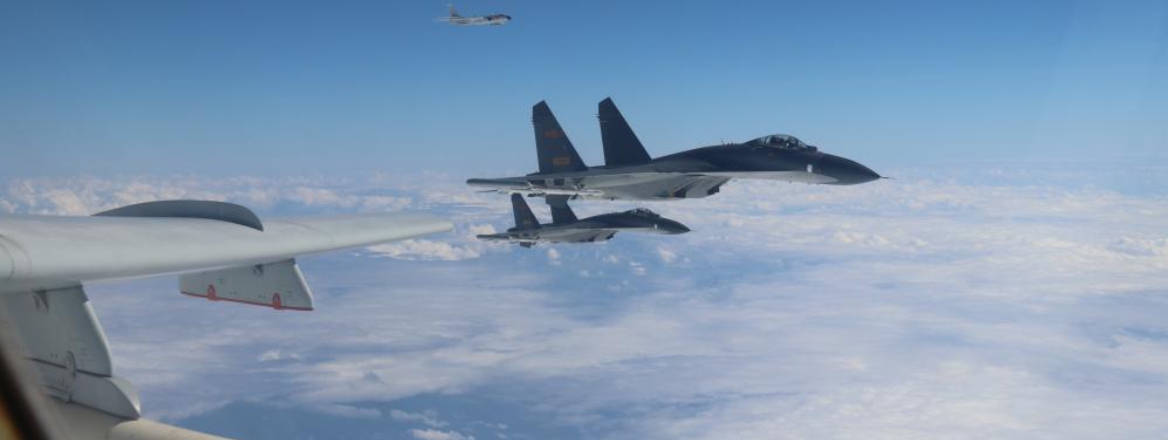Russian and Chinese Combat Air Trends: Current Capabilities and Future Threat Outlook
This Whitehall Report examines Russian and Chinese combat air trends, and looks specifically at fast jets and their weapons systems and capabilities.
The Soviet Union, and latterly Russia, have been the source of both aerial and ground-based pacing threats to Western airpower since the end of the Second World War. However, from a position of dependency on Russian aircraft and weapons, China has developed an advanced indigenous combat aircraft, sensor and weapons industry that is outstripping Russia’s. As a result, for the first time since 1945, the likely source of the most significant aerial threats to Western air capabilities is shifting.
Modern air combat is primarily decided by the balance of advantage in situational awareness. Given broadly comparable numbers, the force which can provide its aircrew with superior awareness of enemy position, track and identity will have a major advantage in any clash. In scenarios where situational awareness is relatively equal, missile reach and seeker performance, crew experience, aircraft performance, electronic warfare (EW) and countermeasures systems all contribute to the likely outcome.
Russia and China currently field superficially similar combat aircraft fleets. Both rely heavily on the Su-27/30 ‘Flanker’ family of combat aircraft and their various derivatives. They have also both pursued a fighter with low-observable (LO) – also known as stealthy – features, alongside increased multirole capability for their main fighter fleets. However, a clear Chinese lead is now emerging over Russia in most technical aspects of combat aircraft development.
The Flanker family of combat aircraft share: a large radar, optical and heat signature; potent kinematic performance; a relatively long range on internal fuel; and the ability to carry heavy ordinance loads of air-to-air or air-to-ground weapons. This makes them comparatively easy to detect and, in the case of Russian Flanker types, the lack of a modern active electronically scanned array (AESA) radar restricts them to relatively ‘brute force’ tactics using powerful but easy-to-detect radars and missiles which are outranged by their Western counterparts.
China has developed J-11 and J-16 series Flanker derivatives featuring AESA radars, new datalinks, improved EW systems and increased use of composites, which give them a superior level of overall combat capability to the latest Russian Flanker, the Su-35S.
This advantage is increased by Chinese advances in both within-visual-range (WVR) and beyond-visual-range (BVR) air-to-air missiles. Unlike the latest Russian R-73M, the PL-10 features an imaging infrared seeker, improving resistance to countermeasures. More significantly, the PL-15 features a miniature AESA seeker head and outranges the US-made AIM-120C/D AMRAAM series. China is also testing a very-long-range air-to-air missile, known as PL-X or PL-17, which has a 400-km class range, multimode seeker and appears to have been designed to attack US big-wing ISTAR and tanker aircraft.
China has developed and introduced into service the first credible non-US-made LO, or fifth-generation, fighter in the form of the J-20A ‘Mighty Dragon’. Subsequent developments are likely to increase its LO characteristics and sensor capabilities, as well as engine performance, with construction of the first production prototypes of the J-20B having begun in 2020.
Overall, the Chinese People’s Liberation Army Air Force (PLAAF) and People’s Liberation Army Navy are rapidly improving their combat air capabilities, including a focus on the sensors, platforms, network connectivity and weapons needed to compete with the US in cutting-edge, predominantly passive-sensor air combat tactics.
The Russian Su-57 Felon is assessed as not yet having matured into a credible frontline weapons system, and as lacking the basic design features required for true LO signature. However, it does offer the potential to correct many of the Flanker family weaknesses with greatly reduced signature and an AESA radar, while improving the already superb agility and performance of the Flanker series.
The Russian Air Force (VKS) does not currently field targeting pods for its ground-attack and multirole fleets. This limits the ground-attack aircraft to internal equivalents with inferior field of view and tactical flexibility, and the multirole fighters to reliance on either pre-briefed GPS/GLONASS target coordinates, radar-guided weapons or target acquisition using fixed seekers on the weapons themselves. This limits VKS fixed-wing capabilities against dynamic battlefield targets compared to Western or Chinese equivalents.
China is actively pursuing unmanned combat aerial vehicle (UCAV) designs with multiple programmes at various stages of development. Detailed assessment is hindered by tight control of information leaks by the Chinese Communist Party. Of those known to be in development, the GJ-11 subsonic attack UCAV appears the most advanced.
Russia is also pursuing UCAV-style technologies and has produced the Su-70 ‘Okhotnik-B’ technology demonstrator. However, it is not yet clear what degree of practical operational capability the Russian aircraft industry will be able to develop through the Su-70, especially given the demands for significant levels of in-flight autonomy inherent in UCAVs designed for state-on-state warfare in heavy EW conditions.
China’s advanced and efficient Flanker derivatives, as well as lightweight multirole fighters in the shape of the J-10B/C series and potentially a developmental FC-31 LO fighter programme, are likely to provide the leading source of non-Western combat aircraft from the mid-2020s onwards. Likewise, their air-launched munitions will increasingly outcompete Russian equivalents on the export market. As such, the development of Chinese capabilities should be closely monitored even by air forces which do not include the PLAAF in their direct threat assessments.
The possibility of technology transfer from China to Russia in the combat air domain could potentially increase the threat level posed to NATO by Russian airpower in the longer term, should such a dynamic emerge.
WRITTEN BY
Justin Bronk
Senior Research Fellow, Airpower & Technology
Military Sciences


